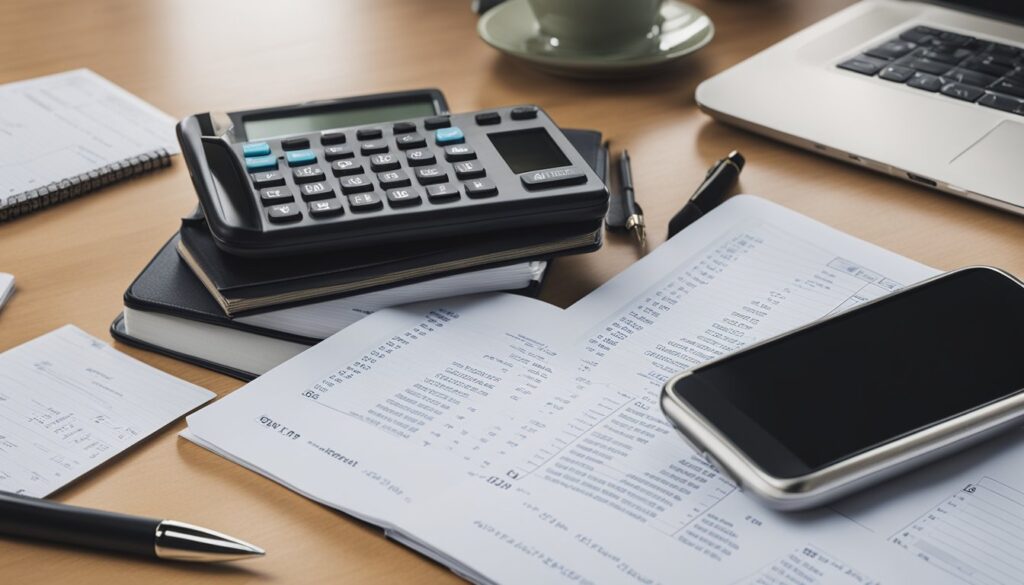If you’re planning to take the GMAT exam, you’re likely aware that the Quantitative section can be one of the most challenging parts of the test. The GMAT Quantitative section measures your ability to solve complex math problems using algebra, geometry, and arithmetic. You’ll be given 62 minutes to complete 31 questions, and you’ll need to use a variety of techniques to tackle challenging quantitative problems on the GMAT exam.
To help you prepare for the GMAT Quantitative section, we’ve put together a guide on some of the most effective strategies for tackling challenging math problems on the test. In this guide, you’ll learn how to approach different types of quantitative problems, how to manage your time effectively, and how to avoid common mistakes that can hurt your score. With these techniques, you’ll be better equipped to handle the challenging quantitative problems on the GMAT exam and achieve your best possible score.
Whether you’re a math whiz or someone who struggles with math, our GMAT Quantitative strategies guide will provide you with the tools and techniques you need to succeed on the exam. By following our tips and practicing with GMAT sample questions, you’ll be well on your way to achieving your target score on the Quantitative section of the GMAT exam.
Understanding the GMAT Quantitative Section

If you’re preparing for the GMAT, you know that the quantitative section is one of the most challenging parts of the exam. In this section, you’ll be tested on your ability to solve complex math problems quickly and accurately. Here’s what you need to know about the GMAT quantitative section.
Exam Format and Timing
The GMAT quantitative section consists of 31 multiple-choice questions, which you’ll need to answer in 62 minutes. This means you’ll have an average of two minutes per question. The questions are divided into two types: problem-solving and data sufficiency. Problem-solving questions are straightforward math problems that you need to solve, while data sufficiency questions provide you with some information and ask you to determine whether you have enough information to solve the problem.
Question Types
As mentioned earlier, the GMAT quantitative section consists of two types of questions: problem-solving and data sufficiency. Problem-solving questions are designed to test your ability to solve complex math problems. These problems can cover a wide range of topics, including arithmetic, algebra, geometry, and statistics.
Data sufficiency questions, on the other hand, are designed to test your ability to determine whether you have enough information to solve a problem. These questions provide you with some information and ask you to determine whether you have enough information to solve the problem. This is a unique type of question that you won’t find on other standardized tests.
Scoring Methodology
Your score on the GMAT quantitative section is based on the number of questions you answer correctly and the difficulty of those questions. The GMAT uses a computer-adaptive testing (CAT) system, which means that the difficulty of the questions you’re asked will change based on how well you’re doing. If you’re answering questions correctly, the computer will give you more difficult questions. If you’re answering questions incorrectly, the computer will give you easier questions.
To tackle challenging quantitative problems on the GMAT exam, you’ll need to develop a range of techniques. These can include strategies for solving specific types of problems, time-management techniques, and ways to stay focused and motivated during the exam. With practice and preparation, you can develop the skills you need to succeed on the GMAT quantitative section.
Core Quantitative Concepts

To excel in the GMAT Quantitative section, you need to have a solid understanding of core quantitative concepts. These concepts are broadly classified into four categories: Arithmetic and Number Properties, Algebra and Equations, Geometry and Measurement, and Data Analysis.
Arithmetic and Number Properties
Arithmetic and Number Properties are the building blocks of the GMAT Quantitative section. You should be comfortable with basic arithmetic operations such as addition, subtraction, multiplication, and division. You should also be familiar with number properties such as odd and even numbers, prime numbers, and divisibility rules.
To tackle challenging quantitative problems on the GMAT exam, you should be able to work with fractions, decimals, and percentages. You should also be familiar with ratios, proportions, and rates. Finally, you should be able to work with exponents and roots.
Algebra and Equations
Algebra and Equations involve the use of variables to solve mathematical problems. You should be able to solve linear and quadratic equations, and inequalities. You should also be able to work with functions and graphs.
To tackle challenging quantitative problems on the GMAT exam, you should be able to solve word problems that involve algebraic equations. You should also be able to work with simultaneous equations and inequalities.
Geometry and Measurement
Geometry and Measurement involve the study of shapes, sizes, and measurements. You should be familiar with basic geometric shapes such as triangles, circles, and squares. You should also be able to work with angles, lines, and polygons.
To tackle challenging quantitative problems on the GMAT exam, you should be able to solve problems that involve geometric concepts such as area, perimeter, volume, and surface area. You should also be familiar with coordinate geometry and trigonometry.
Data Analysis
Data Analysis involves the interpretation and manipulation of data. You should be able to work with basic statistical concepts such as mean, median, and mode. You should also be able to work with probability and combinatorics.
To tackle challenging quantitative problems on the GMAT exam, you should be able to interpret data from tables, charts, and graphs. You should also be able to solve problems that involve probability and combinatorics.
By mastering these core quantitative concepts, you will be well-prepared to tackle challenging quantitative problems on the GMAT exam.
Strategic Problem Solving

When it comes to the GMAT Quantitative section, strategic problem-solving is key to achieving a high score. This section requires you to apply mathematical concepts and analytical skills to solve complex problems. Here are some strategies to help you approach the Problem Solving questions with confidence.
Pacing Strategies
The GMAT Quantitative section is timed, so it’s important to manage your time effectively. While accuracy is crucial, be conscious of the allotted time for each question. Practicing with timed mock tests can help you develop a sense of how long you should spend on each question. Here are some pacing strategies to consider:
- The 2-minute rule: Try to spend no more than 2 minutes on each question. If you’re not making progress after 2 minutes, move on to the next question. You can always come back to it later if you have time.
- The 1-minute rule: For easier questions, try to spend no more than 1 minute on each question. This will give you more time to focus on the harder questions.
- The 5-second rule: If you’re stuck on a question, try to eliminate at least one answer choice within 5 seconds. This will increase your chances of guessing the correct answer.
Approaching Data Sufficiency
Data Sufficiency questions on the GMAT Quantitative section can be tricky. Here are some tips to help you approach these questions:
- Read the question stem carefully: The question stem will tell you what you need to solve for. Make sure you understand what the question is asking before you start analyzing the statements.
- Analyze each statement separately: Don’t try to combine the statements until you’ve analyzed each one separately. If a statement is sufficient on its own, you don’t need to consider the other statement.
- Look for hidden clues: Sometimes the answer is hidden in the question stem. Look for clues that can help you determine whether a statement is sufficient or not.
Test-Taking Techniques
Here are some test-taking techniques to help you approach the GMAT Quantitative section with confidence:
- Process of elimination: Eliminate answer choices that are obviously wrong. This will increase your chances of guessing the correct answer.
- Backsolving: For some questions, it’s easier to plug in the answer choices and see which one works. This can save you time and help you avoid making careless mistakes.
- Estimation: Sometimes you don’t need an exact answer. Estimation can help you quickly eliminate answer choices that are too high or too low.
By following these strategies, you can improve your problem-solving skills and tackle challenging quantitative problems on the GMAT exam with confidence.
Practice and Review

To ace the GMAT Quantitative section, you need to practice and review consistently. Here are some effective study plans to help you prepare for the exam.
Effective Study Plans
- Set a realistic study schedule: Create a study schedule that works for you. Determine how much time you can dedicate to studying each week and plan accordingly. Consistency is key, so make sure you stick to your schedule.
- Focus on your weak areas: Identify your weak areas and focus on them. Spend more time practicing questions in those areas to improve your skills.
- Practice with official GMAT questions: The GMAT is a unique exam, and practicing with official GMAT questions is essential. The GMAT Official Guide Quantitative Review 2024-2025 is a great resource for practice questions.
- Use a variety of study materials: Don’t rely on just one study material. Use a variety of resources, including books, online courses, and practice tests, to help you prepare for the exam.
Reviewing Practice Tests
Reviewing practice tests is just as important as taking them. Here are some tips for reviewing your practice tests:
- Analyze your mistakes: Review each question you got wrong and understand why you got it wrong. This will help you avoid making the same mistake in the future.
- Identify patterns: Look for patterns in your mistakes. Are you consistently making the same type of mistake? If so, focus on improving your skills in that area.
- Track your progress: Keep track of your progress by recording your scores and the number of questions you get right and wrong. This will help you identify areas where you need to improve.
- Take timed practice tests: Take timed practice tests to simulate the real exam. This will help you get used to the time pressure and improve your time management skills.
By following these effective study plans and reviewing your practice tests, you’ll be well on your way to tackling challenging quantitative problems on the GMAT exam.






